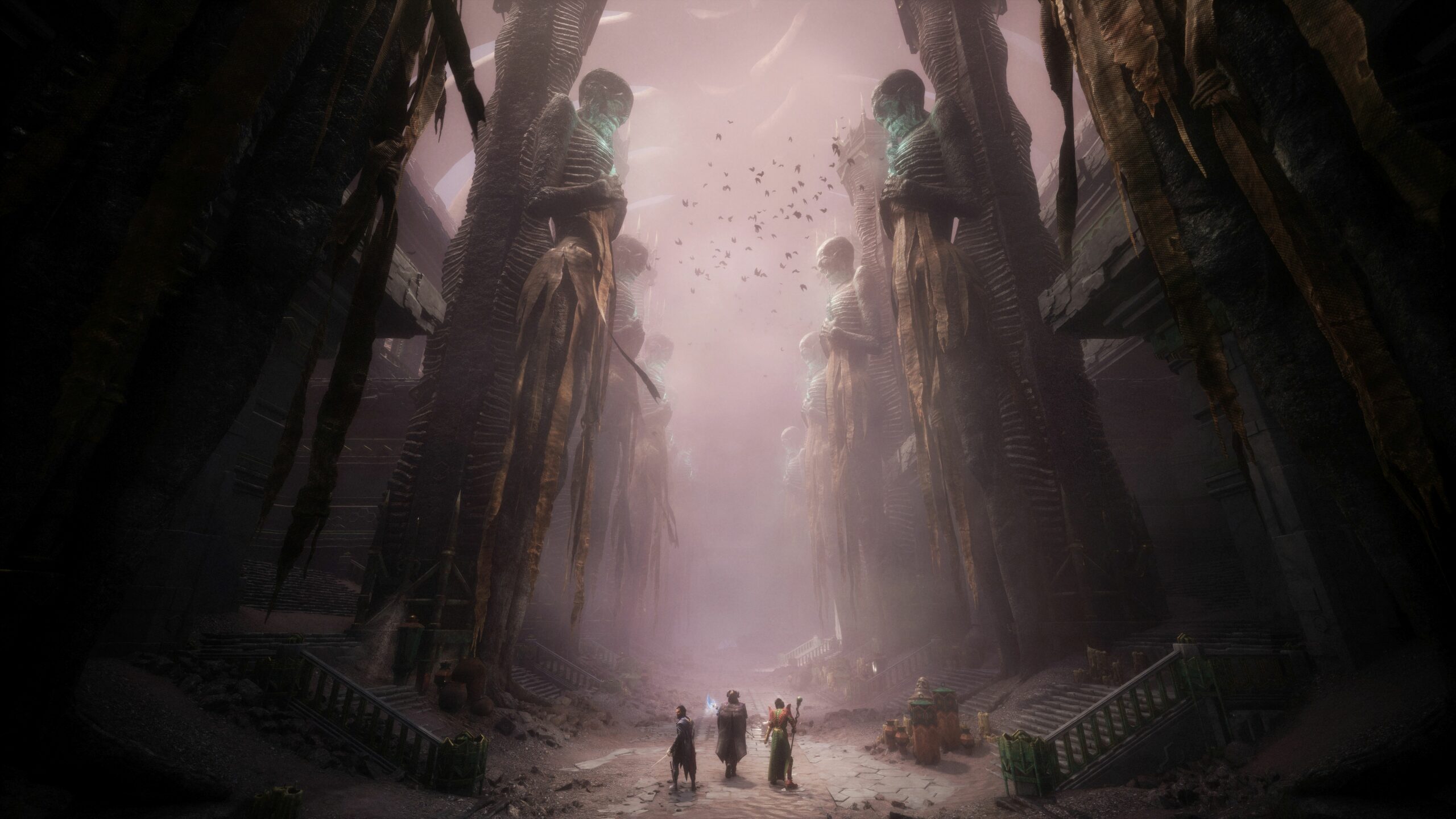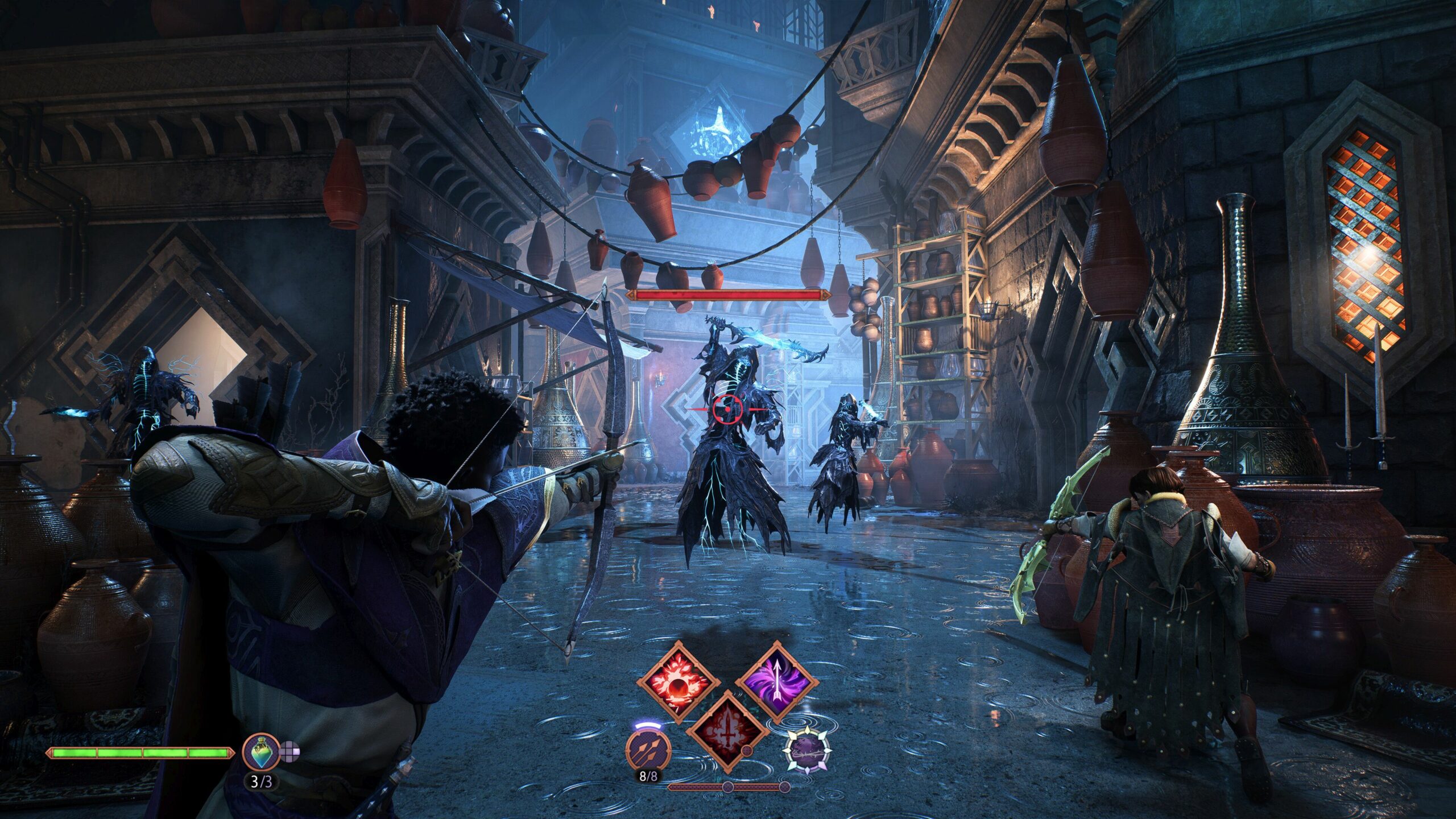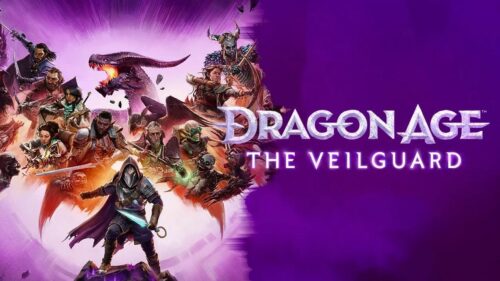Dragon Age: The Veilguard Review
Let’s get the bad news out of the way first. Dragon Age: The Veilguard is not the follow-up to 2009’s Dragon Age: Origins that its vocal community of obsessively die-hard fans have been waiting for. For that matter, neither was Dragon Age II or Dragon Age: Inquisition. As everyone has already noticed from trailers and previews, Dragon Age: The Veilguard has a different agenda, visual style, and combat mechanics.
Which brings us to the good news. Dragon Age: The Veilguard is extremely polished, alive with energy, engaging characters, a beautiful world, and satisfying combat. It’s not all sweetness and light, either. As Bruce Springsteen wrote, there’s darkness on the edge of town. It might not be the heir apparent to Origins, but there’s plenty of Dragon Age’s signature lore and a complex web of relationships in the new game. By design, The Veilguard is also a great place to jump into the world of Dragon Age.
No Spoilers Ahead
There’s a great deal of story, a host of characters, and many incidents we’ve been asked not to spoil, making discussing the game’s narrative challenging. You play as Rook, at the start thrust into a battle between familiar characters Varric and Solas, who is trying to contain — or possibly release — the Elven gods and their archdemons behind the Veil. Things go south and thanks to you, important characters get hurt and the narrative seeds are planted. The seeds grow into three sprawling acts and dozens of hours of game. Dragon Age: The Veilguard is substantial, with a 40+ hour main campaign (depending on difficulty and side quests), and easily twice that to see and do everything.

Dragon Age: The Veilguard starts with a banger prologue, then retreats a bit to introduce some basic mechanics and early companions, a few of whom we’ve met in prior games, like Veil Jumper Lace Harding. At first, the story and characters feel a little sanitized and bordering on one-dimensional. But as the story unfolds and Rook assists, and gains the trust of the widening circle of companions, the emotional complexity of the characters deepens.
Without giving anything away, there are countless emotional beats and critical choices. I was often affected by what many of the characters were going through. Veilguard ends up exploring some timely themes — maybe in an occasionally inelegant way — as well. While the first act carries a relatively light tone, there is no lack of darkness as the story unwinds. There’s a lot of loss, sadness, fear, death, and conflict in the game, as well as more positive acts of kindness, courage, and triumph.
Master Class
Considering how many characters there are in Veilguard and how much dialogue needed to be written and recorded, the consistency of vocal performance quality is remarkable. For sure, not everyone will vibe with every companion, either as an ally in battle, a friend, or a romantic interest. But they’re all generally well-written and fully realized. My biggest gripe in this department was that some of the dialogue doesn’t always escape the clutch of fantasy game cliche. Now and then there are some jarring transitions and awkward tonal shifts. BioWare has tried awfully hard to be inclusive and fold in some pretty contemporary character concerns.
The developers have opted for a stylized, smooth, Pixar-ish cartoony look for many characters. The proportionally large heads definitely take some getting used to. While the art style might be shifted away from realism, characters are still very expressive, setting aside some sketchy lip syncing. The biggest drawback to the new character design approach is the way it takes some potential impact or menace from monsters and enemies. They’re not particularly fearsome or grotesque in the way that FromSoftware’s monsters can be. Many are powerful and inventive, just rarely terrifying.
Branching Out
Veilguard ditches the largely empty, open-world setting of Inquisition in favor of a hub-and-spoke design and is stronger for it. Your home base is the Lighthouse, a sort of interdimensional safe house. The Lighthouse is where all your companions will reside, where you upgrade armor and weapons and set out to various locations on both main story and side quests. Almost without exception, the environments and level design in Vanguard are spectacular and detailed. I’d much prefer a curated and intentionally crafted world than a lifeless or procedurally generated open design. All the locations in Veilguard can be visited multiple times and there are almost always secrets, side quests, and new things to discover.

The Thick of Combat
Alongside the massive amount of story and dialogue, the player will spend a lot of time in combat. For Veilguard, BioWare has evolved combat mechanics and it’s now best described as real-time action with pause. The pause is not to position your allies but rather to synergize special abilities with your companions or focus powers on specific enemies. Combat is fast, frenetic, and incredibly engaging. Your approach to combat keeps changing, with new spells or abilities added as new companions join the team. In fact, you will often select companions based on the way their abilities work with yours or others in the party. In some missions, you can switch up your party several times as needed. Finally, leveling up your companions on the skill tree comes via a brand new alchemy based on your relationship.
The elements of combat and controls are introduced throughout the first few hours of the game. Over time, they become second nature.
Players who enjoyed Inquisition’s semi-real time approach to combat will either see The Veilguard as a natural evolution or more negatively, BioWare’s willingness to chase mechanics currently popular in ARPGs like God of War. Is the combat deep and enjoyable enough to sustain hours of play? It is. However, combat is also where my biggest complaint about the game rears its ugly head. There’s simply not enough enemy variety. I never tired of engaging with my party’s skills, spells and weapons but by 20 or 30 hours in, I was getting pretty weary of the familiar Darkspawn foes and their very familiar combat style.

A Hero Forged
To start, players choose from four races and three familiar starting classes — warrior, mage, and rogue. Each can be evolved into three specialized sub-classes, with a large array of active and passive abilities reconfigurable at any time without penalty. The player also selects a faction. As always, these have a significant impact on the narrative, quests, and relationships. Speaking of relationships, Rook can romance any of the companions. The companions can also romance each other. Dialogue choices are made using the same mechanic as in prior games, with the fundamentally same types of hints as to their intention or outcome.
There’s no arguing that Dragon Age: The Veilguard radically reinvents some aspects of the franchise. For many fans, the relationships and characters define a Dragon Age game. At least in my experience, I found this element as effective as ever. And speaking of effectiveness, Dragon Age: The Veilguard has an excellent musical score. Two heavy hitters, Hans Zimmer and Lorne Balfe, deliver the goods here.
Where are the Bugs?
Dragon Age: The Veilguard went through a lengthy development process with a few stumbles and hiccups along the way. Sometimes that results in design confusion, messy tech and other problems. Dragon Age: The Veilguard is the most polished and bug-free AAA game I’ve played in a very long time. Over dozens of hours on PS5, there were no crashes, bugged quests, and only very minor and occasional texture pop-ins or characters stuck in scenery.

The game’s UI can be…a lot. Happily, there are extensive options for modifying it or even turning most of it off altogether. Overall, Dragon Age: The Veilguard has a deep set of options for accessibility, difficulty, controls, graphics, and sound. It’s a highly customizable experience and includes one of the best character creators ever in an RPG.
The Way of the Future
It’s rare for any game in a long-running franchise to nail the balance between deep fan service, staying true to an old vision, and still being welcoming to newcomers. Recently, Elden Ring came pretty close. So did Baldur’s Gate 3. After a ten years’ absence, I can certainly see the developer’s rationale for moving in a new direction. But I enjoyed the original games, too, and I can understand long-suffering fans’ desire for a true, modern-day successor to Origins. All said, that Dragon Age: The Veilguard doesn’t quite hit the balance is less of a concern than whether the game is interesting and entertaining, which it very much is.
While it looks and plays differently than past Dragon Age games, Dragon Age: The Veilguard doesn’t abandon either its rich trove of lore, well-imagined characters or the ability to tell engaging stories. Dragon Age: The Veilguard has memorable companions and action-focused combat that contains more than enough depth to see it through to the end. Polished and confident, Dragon Age: The Veilguard feels like a return to form for the developer. Dragon Age: The Veilguard gives us a beautiful world to experience, interesting allies to explore it with, and action that grows increasingly more nuanced throughout.
***PS5 code provided by the publisher for review***
The Good
- Interesting characters and story
- Enjoyable, deep combat systems
- Beautiful art design and world
- Excellent writing and acting
- Extremely polished
The Bad
- Repetitive enemies
- Some jarring transitions
- Some pacing issues in Act 2

